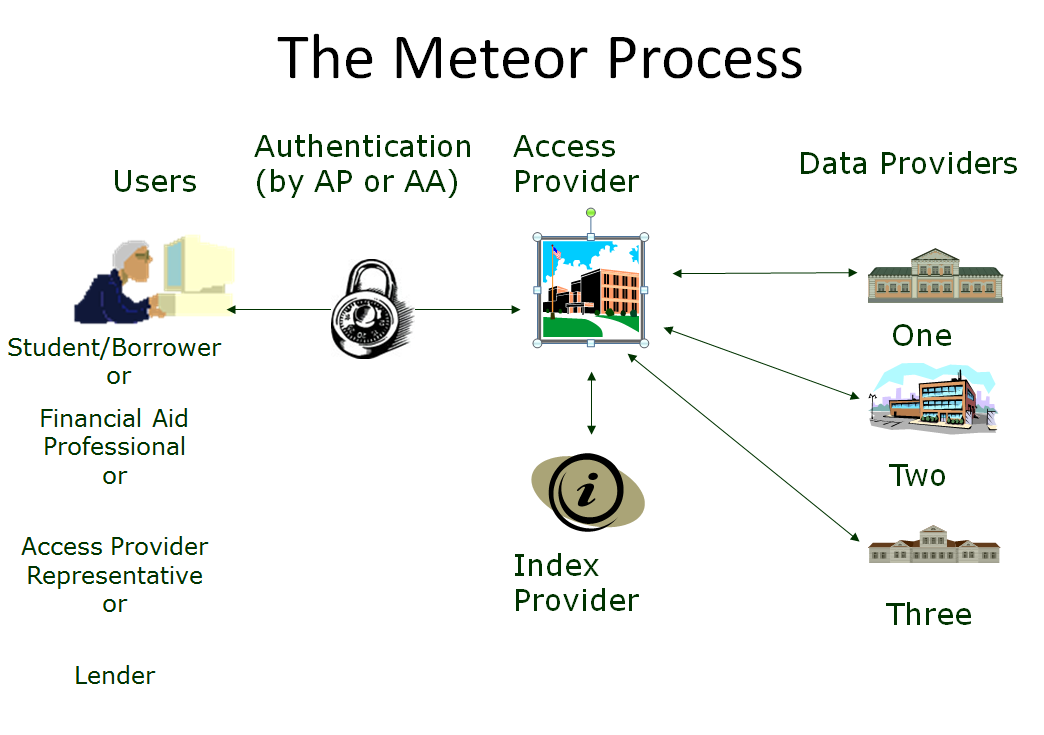 More than ten years on, the Meteor Network remains the only online-real time network supporting higher education staff and students. Implemented in 2001 by the National Council of Higher Education Loan Programs (NCHELP), Meteor provided students with current information about their FELP federally-guaranteed loans without needing to know which lenders and servicers had data about their loans.
More than ten years on, the Meteor Network remains the only online-real time network supporting higher education staff and students. Implemented in 2001 by the National Council of Higher Education Loan Programs (NCHELP), Meteor provided students with current information about their FELP federally-guaranteed loans without needing to know which lenders and servicers had data about their loans.
Security of the data exchanges meets the National Institute of Standards and Technology’s 800-53 requirements for Level of Assurance (LOA) 2. Because this exceeds typical college and university security practices, students and financial aid staff used credentials from guaranty agencies.
The network was implemented in three phases.
The first, done by instructional media + magic inc. and Sigma Systems Inc., was a prototype to demonstrate feasibility. Two major banks were in sharp disagreement about whether such a network could deliver formatted information to a student in acceptable time if the data came from one to all eleven participating servicers. One bank suggested it would take at least a minute to exchange data over the Internet. Another said the basic exchange would take 63 milliseconds; messages to and from all 11 would be about 40 seconds. The team who developed uPortal (and im+m staff)—Peter Kharchenko, now at Harvard University and Justin Tilton, now in the Czech Republic — created both a prototype and a way to visual the messages as they transited the Internet. Demonstrating the prototype at an NCHELP Conference, the message and returned data message took 23 milliseconds from Miami to Washington DC. Because XML based SOAP messages were used, the Conference attendees could see understandable text in the displayed message exchanges. The project was funded.
This development occurred just before, and was coordinated with, the U.S. Department of Education’s announcement that XML would be used for all data exchanges of financial aid data.
The second phase was development and testing of production software. This was led by Tim Bornholtz, Software Architect at Priority Data in Omaha, Nebraska. He subsequently initiated development of the Thebes network at Georgetown University. Then he returned to Federal Student Aid as they move toward real-time data exchange via standard messaging supporting service oriented architecture (SOA).
In the third phase, the Meteor Advisory Team observing the use of the network, developed and implemented separate formats for students and financial aid officers that combined, prioritized, and displayed information from all sources of data. The network continues to operate and is becoming a model (including the RS3G specifications) for exchanging other higher education data.

